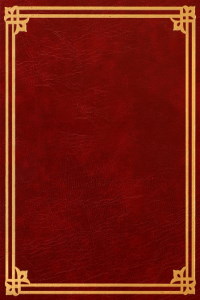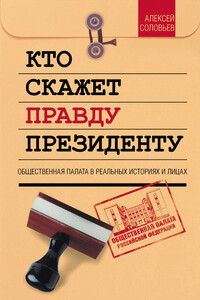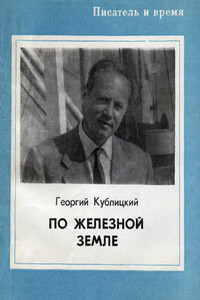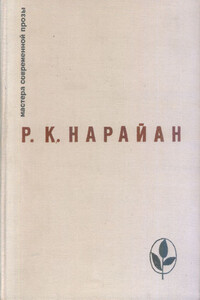Церковная старина в современной России - [195]
In this period the new government strategy is in search of financial flows for the restoration due to the position of Ministry of economic developments and Federal agency on management of federal property that neglects the needs of cultural life. Alongside with this apart from economic aspect, as a result of ongoing democratic reforms, the transfer of the real estate and monuments to Russian Orthodox Church has got the political significance. Authorities grant material resources and means of influence to their main ideological partner and the Orthodoxy in a new fundamentalist version begins to play a role of national ideology in the society. For this purpose, the cultural heritage and its interpretation are transformed to conformity with political needs. It is obvious, that the main threat to monuments of religious culture today is connected not with their physical destruction, but with conscious purposeful changes of theirs cultural-historical shape that needs to be protected according to the law and historical memory. This process is in keeping with aesthetic and every day life preferences of modern orthodox mentality that, unfortunately, is shared by significant part of society and bureaucracy. It is necessary to note the aspirations of several social groups, namely clergy and functionaries, to change the national legislation in the area of protection of cultural heritage.
The controversy between the Moscow patriarchy and museums on the status of former ecclesiastical propriety and the right of possession of sacred art objects could not be regarded only as the argument based on interest of owners. Museum community really worries about the status and safety of monuments and sites. The situation in this field is unfavorable today and its development was influenced by following objective factors. Among the political factors I note the contradictions between the representatives of federal and regional authorities, so-called «parade of sovereignties» in Russia, when the church buildings were transferred to the Church without previous consultation with Ministry of culture specialists.
In 2010 a new law is being drawn up on the restitution of ecclesiastical property including cultural monuments of federal importance which privatization is strictly forbidden. According to governmental representatives, the state is getting rid of its Soviet heritage in terms of confiscated church property but it is not restitution itself, only a goodwill gesture. According to experts this project may only legitimate the chaotic privatization of masterpieces of Orthodox art by religious communities without any cultural heritage protection and civil control over using of monumental architecture that could lead to its loss and inaccessibility for non-religious people.
In the same time Russian government in 2001–2010 tried to use the moral authority and propaganda opportunities of the Moscow patriarchy for the support of internal and foreign policy in exchange for property return. On social lifelevel there exists public pragmatism which gives preference to instant economic benefit over complex and expensive actions on cultural heritage objects preservation. At the same time there exists the loop of law in the sphere of protection and use of monuments and sites. Today in Russian Federation we can see degradation of monument protection system and lack of personal responsibility of officials for such protection. Unfortunately, the museums in Russian Federation are a close and inert system; they are incapable of preventive measures dealing with religious organizations. They are equally incapable of old-fashioned expositions re-structuring and of involving the public, including Christian, in their activity.
The situation inside Russian Orthodox Church also aggravates the state of monuments and sites and threatens its safety. The Moscow patriarchy aspires to establish leader positions in the society and effectuates so-called «new Christianization» using in its activity the principal and outstanding monuments of culture. At the same time the ordinary believers show selfish and irresponsible aspiration to satisfy theirs religious needs without any responsibility monuments protection. I note that clergymen and laymen desire to assert through the return of monuments as a way of revenge to art workers for the expropriation of the Church property in XX century and the aims for the self-affirmation through refusal to follow recommendations of experts. In the Church grows the pragmatism, which opposites of the attitude towards Christian monuments as a form of Holy Tradition that belong to the historical Orthodoxy. The situation is influenced by mass fall of cultural and educational background of clergymen and laymen in Moscow patriarchy. The ideological transformation, theological mutation and changes of religious behavior as a result of neo-conservatism and acculturation also lead to the transformation of monuments and sites. The actual public and state control over religious organizations activities does not exist. I have to mention the wide spread system of corrupted relations between culture experts and heads of the religious organizations, who justify the actions of such organizations aimed at destruction or deformation of monuments. The religious minorities in present Russia as a whole try to respect the law on monuments protection; but Moscow patriarchy counting on the support of authorities dares violating existing norms. The deplorable situation with the protection of monuments and sites, used by religious organization, reflects the general state of cultural heritage protection and its use in Russian Federation, but bears some specific features.

В книге рассказывается история главного героя, который сталкивается с различными проблемами и препятствиями на протяжении всего своего путешествия. По пути он встречает множество второстепенных персонажей, которые играют важные роли в истории. Благодаря опыту главного героя книга исследует такие темы, как любовь, потеря, надежда и стойкость. По мере того, как главный герой преодолевает свои трудности, он усваивает ценные уроки жизни и растет как личность.

"Литературная газета" общественно-политический еженедельник Главный редактор "Литературной газеты" Поляков Юрий Михайлович http://www.lgz.ru/.

«Почему я собираюсь записать сейчас свои воспоминания о покойном Леониде Николаевиче Андрееве? Есть ли у меня такие воспоминания, которые стоило бы сообщать?Работали ли мы вместе с ним над чем-нибудь? – Никогда. Часто мы встречались? – Нет, очень редко. Были у нас значительные разговоры? – Был один, но этот разговор очень мало касался обоих нас и имел окончание трагикомическое, а пожалуй, и просто водевильное, так что о нем не хочется вспоминать…».

Деятельность «общественников» широко освещается прессой, но о многих фактах, скрытых от глаз широких кругов или оставшихся в тени, рассказывается впервые. Например, за что Леонид Рошаль объявил войну Минздраву или как игорная мафия угрожала Карену Шахназарову и Александру Калягину? Зачем Николай Сванидзе, рискуя жизнью, вел переговоры с разъяренными омоновцами и как российские наблюдатели повлияли на выборы Президента Украины?Новое развитие в книге получили такие громкие дела, как конфликт в Южном Бутове, трагедия рядового Андрея Сычева, движение в защиту алтайского водителя Олега Щербинского и другие.

Курская магнитная аномалия — величайший железорудный бассейн планеты. Заинтересованное внимание читателей привлекают и по-своему драматическая история КМА, и бурный размах строительства гигантского промышленного комплекса в сердце Российской Федерации.Писатель Георгий Кублицкий рассказывает о многих сторонах жизни и быта горняцких городов, о гигантских карьерах, где работают машины, рожденные научно-технической революцией, о делах и героях рудного бассейна.

Свободные раздумья на избранную тему, сатирические гротески, лирические зарисовки — эссе Нарайана широко разнообразят каноны жанра. Почти во всех эссе проявляется характерная черта сатирического дарования писателя — остро подмечая несообразности и пороки нашего времени, он умеет легким смещением акцентов и утрировкой доводить их до полного абсурда.